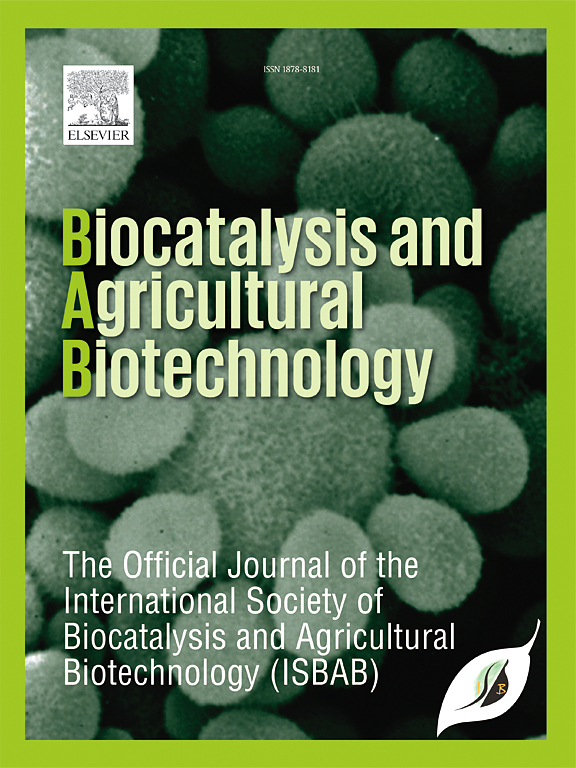Zooplankton biomass as a promising new agent for biomedical applications
IF 3.4
Q2 BIOTECHNOLOGY & APPLIED MICROBIOLOGY
引用次数: 0
Abstract
Zooplankton biomasses are essential nutritional sources for early-stage aquatic organisms due to their high-value nutrient profiles. Recent studies highlight the potential of zooplankton mixtures and Artemia franciscana (Leach, 1819) biomasses as protein-rich alternatives for fish diets. The current study analyzed these biomasses for chemical composition, vitamin content, and antioxidant properties. For the first time, a zooplankton mixture was evaluated for its antimicrobial, anti-biofilm, and anticancer activities against various pathogenic microorganisms and cancer cell lines. Antimicrobial assays demonstrated that both the zooplankton mixture and A. franciscana biomass exhibited inhibitory effects against Staphylococcus aureus ATCC 6538, Pseudomonas aeruginosa ATCC 27853, and Alternaria solani RCMB 009 003, as observed through agar well diffusion. Anti-biofilm testing showed that the biomass of the zooplankton mixture effectively inhibited biofilm formation by P. aeruginosa ATCC 27853 and S. aureus ATCC 6538. Additionally, anticancer activity was assessed against three cancer cell lines: breast (MCF-7), liver (HepG-2), and colon (HCT-116). The zooplankton mixture and A. franciscana biomass displayed cytotoxicity across all cell lines, with IC50 values for HepG-2 at 23.47 μg mL−1 and 14.48 μg mL−1, respectively; for HCT-116 at 19.46 μg mL−1 and 13.05 μg mL−1, respectively; and for MCF-7 at 26.51 μg mL−1 and 16.81 μg mL−1, respectively. These findings suggest that both biomasses are promising candidates in medical applications, with potential antimicrobial and anticancer effects.

浮游动物生物量是一种很有前景的生物医学新药剂
浮游动物生物量具有较高的营养价值,是早期水生生物必不可少的营养来源。最近的研究强调了浮游动物混合物和Artemia franciscana (Leach, 1819)生物量作为鱼类饲料中富含蛋白质的替代品的潜力。目前的研究分析了这些生物质的化学成分、维生素含量和抗氧化性能。首次对一种浮游动物混合物进行了抑菌、抗生物膜和抗癌活性的评价。通过琼脂孔扩散实验发现,浮游动物混合物和金银花藻生物量对金黄色葡萄球菌ATCC 6538、铜绿假单胞菌ATCC 27853和稻孢霉RCMB 009 003均有抑制作用。抗生物膜实验表明,混合浮游动物生物量能有效抑制铜绿假单胞菌ATCC 27853和金黄色葡萄球菌ATCC 6538的生物膜形成。此外,还评估了对三种癌细胞系的抗癌活性:乳腺癌(MCF-7)、肝癌(HepG-2)和结肠癌(HCT-116)。浮游动物混合物和金颡鱼生物量在所有细胞系中均表现出细胞毒性,HepG-2的IC50值分别为23.47 μg mL - 1和14.48 μg mL - 1;HCT-116分别为19.46 μ mL -1和13.05 μ mL -1;MCF-7分别为26.51 μg mL - 1和16.81 μg mL - 1。这些发现表明,这两种生物质在医学应用中都有很好的前景,具有潜在的抗菌和抗癌作用。
本文章由计算机程序翻译,如有差异,请以英文原文为准。
求助全文
约1分钟内获得全文
求助全文
来源期刊

Biocatalysis and agricultural biotechnology
Agricultural and Biological Sciences-Agronomy and Crop Science
CiteScore
7.70
自引率
2.50%
发文量
308
审稿时长
48 days
期刊介绍:
Biocatalysis and Agricultural Biotechnology is the official journal of the International Society of Biocatalysis and Agricultural Biotechnology (ISBAB). The journal publishes high quality articles especially in the science and technology of biocatalysis, bioprocesses, agricultural biotechnology, biomedical biotechnology, and, if appropriate, from other related areas of biotechnology. The journal will publish peer-reviewed basic and applied research papers, authoritative reviews, and feature articles. The scope of the journal encompasses the research, industrial, and commercial aspects of biotechnology, including the areas of: biocatalysis; bioprocesses; food and agriculture; genetic engineering; molecular biology; healthcare and pharmaceuticals; biofuels; genomics; nanotechnology; environment and biodiversity; and bioremediation.
 求助内容:
求助内容: 应助结果提醒方式:
应助结果提醒方式:


